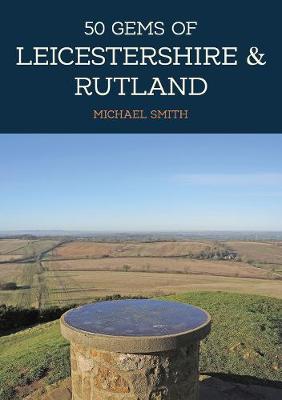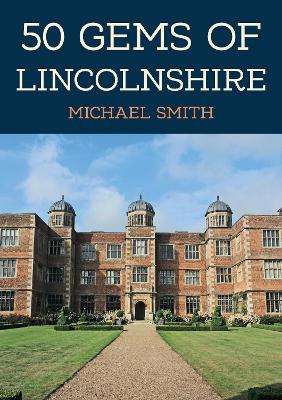50 Gems
2 total works
Leicestershire is a fascinating and diverse county. Its countryside, market towns and historic buildings attract large numbers of visitors. Place names show evidence of Roman, Saxon and Norman settlement. The Normans built castles and churches and although the castles are now in ruins, Leicestershire has some of the most beautiful parish churches in the country. The Tudor era was born in Leicestershire when Henry Tudor defeated Richard III at the Battle of Bosworth Field in August 1485. Centuries later, in 2012, an ambitious excavation project uncovered the remains of Richard III under the site of a Leicester car park, and these have since been reinterred in the city’s cathedral. Some of the canals and railways created in Leicestershire during the Industrial Revolution have become popular heritage sites, and the county is also known for its Stilton cheese and Melton Mowbray pork pies, which are famous throughout the world.
Rutland is England’s smallest county and for a time was incorporated into its much larger neighbour of Leicestershire. Its motto is ‘Much in Little’ and this small shire has been described as ‘a scenic slice of Middle England bursting with things to see and do’.
In 50 Gems of Leicestershire & Rutland, local author Michael Smith highlights some of his favourite places from both counties. He has selected those locations and sites which give the visitor a real flavour of these shires at the heart of England. Included are historic buildings, parks, open spaces, events and festivals which reflect Leicestershire and Rutland’s rich heritage and diverse cultures. From the River Soar meandering through a thousand years of history to the vast expanse of Rutland Water and from Bronze Age to Jet Age monuments, this is a wonderful illustrated insight into these counties.
Rutland is England’s smallest county and for a time was incorporated into its much larger neighbour of Leicestershire. Its motto is ‘Much in Little’ and this small shire has been described as ‘a scenic slice of Middle England bursting with things to see and do’.
In 50 Gems of Leicestershire & Rutland, local author Michael Smith highlights some of his favourite places from both counties. He has selected those locations and sites which give the visitor a real flavour of these shires at the heart of England. Included are historic buildings, parks, open spaces, events and festivals which reflect Leicestershire and Rutland’s rich heritage and diverse cultures. From the River Soar meandering through a thousand years of history to the vast expanse of Rutland Water and from Bronze Age to Jet Age monuments, this is a wonderful illustrated insight into these counties.
Lincolnshire is a county of contrasts, ranging from the seaside resorts on the east coast to the rolling chalk hills of the Lincolnshire Wolds and the fenland area of the south-east. The area has been settled since prehistoric times, the Romans established the town of Lindum (present-day Lincoln) for retired legionaries, a number of churches date from the Saxon period, and place names provide a reminder of the county's Viking past.
Lincoln became a thriving medieval settlement, evidenced by its magnificent cathedral and castle. The coming of the railways in the nineteenth century created the seaside resorts of Skegness, Cleethorpes and Mablethorpe. During the Second World War Lincolnshire became ‘Bomber County’ as it was home to a large number of airbases. It was from here that the daring Dambusters raid was launched. The county also boasts a proud cultural heritage. The writer Alfred Lord Tennyson and the landscape artist Peter de Wint both drew inspiration from the Lincolnshire countryside. Annual events include the Lincoln Christmas Fair and the quirky Steampunk Festival, as well as the famous Haxey Hood game.
50 Gems of Lincolnshire explores the many places and their history that make this part of the country so special, including natural features, towns and villages, buildings and places of historical interest. Alongside justly famous attractions, others will be relatively unknown but all have an interesting story to tell.
Lincoln became a thriving medieval settlement, evidenced by its magnificent cathedral and castle. The coming of the railways in the nineteenth century created the seaside resorts of Skegness, Cleethorpes and Mablethorpe. During the Second World War Lincolnshire became ‘Bomber County’ as it was home to a large number of airbases. It was from here that the daring Dambusters raid was launched. The county also boasts a proud cultural heritage. The writer Alfred Lord Tennyson and the landscape artist Peter de Wint both drew inspiration from the Lincolnshire countryside. Annual events include the Lincoln Christmas Fair and the quirky Steampunk Festival, as well as the famous Haxey Hood game.
50 Gems of Lincolnshire explores the many places and their history that make this part of the country so special, including natural features, towns and villages, buildings and places of historical interest. Alongside justly famous attractions, others will be relatively unknown but all have an interesting story to tell.

